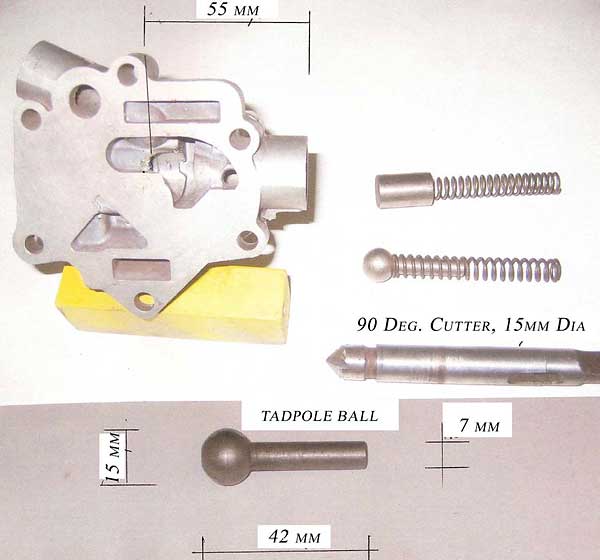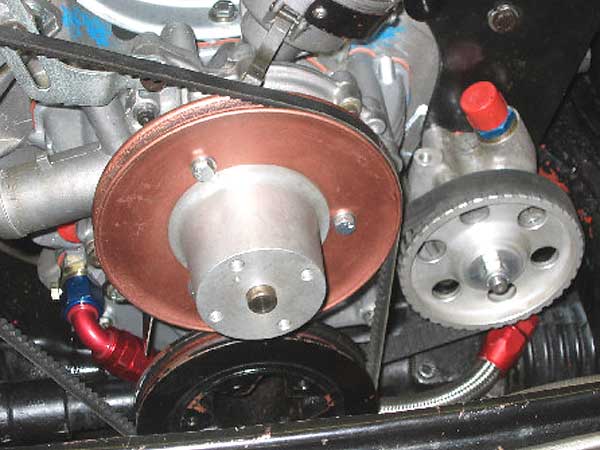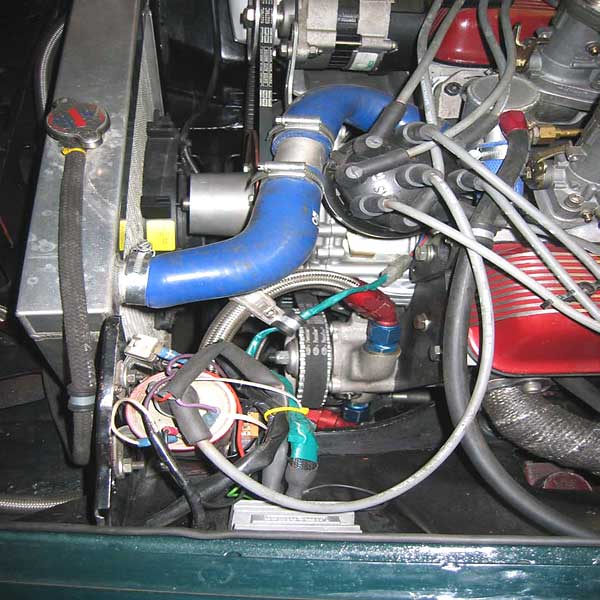Rover Oil Pump Upgrades
This article appeared in The British V8 Newsletter - Volume IV, Issue 1 - January 2006by: Jean Monfort
The Rover oil pump has a weakness: the relief valve, which is no more than a small spring-assisted piston. This piston uncovers the return port and allows oil to bypass if the oil pressure becomes too high. Fitting a new piston can cause jamming in the bypass position. The oil pressure falls immediately to zero! The jamming can sometimes be temporary, so the oil pressure is inconsistent.
There are two ways to avoid the worse case scenario: (1) replace the whole unit with both a new piston relief valve AND a new expensive pump base, or (2) better yet, fit a cheap Tadpole type relief valve into your oil pump base.

How do you do that?
1- Mill a small seat in the oil pump base with a 90 degree cutter.
2- Make a Tadpole type valve, on a lathe, from high grade steel.
3- Harden the ball by heat treating.
4- Increase the oil flow by enlarging the port close to the valve.
5- It is not necessary to replace the spring. The old one will be more than enough when compressed by the ball.
If the oil pump gears are new, or in good condition, the pump will now put out oil at 45 PSI (at idle) and will never forsake you. After all that, if you are afraid of a pump axle breaking, the only other option is the external oil pump!
The Ultimate Oil Pump?
To fit an external oil pump, the timing cover must be removed and slightly modified to create threaded "in" and "out" oil ports.
For the first step, remove the oil-pump gears and clamp the timing-cover to a milling machine. Mill-off the pump housing, being careful not to damage the rest of the cover. The object of doing this is to access and enlarge the stock "in" and "out" (going to the block) oil ducts. In doing that, you will hit some chambers or ports, and they must be sealed by TIG welding.

In the second step, plane a small seat around the holes, thread the ducts and screw in two male/male adapters and washers. Never use light alloy adapters as they are not strong enough to hold the 5/8" SS braided hoses; use steel connectors.
To fit an external oil pump, the timing cover must be removed and slightly modified to create threaded "in" and "out" oil ports.
For the first step, remove the oil-pump gears and clamp the timing-cover to a milling machine. Mill-off the pump housing, being careful not to damage the rest of the cover. The object of doing this is to access and enlarge the stock "in" and "out" (going to the block) oil ducts. In doing that, you will hit some chambers or ports, and they must be sealed by TIG welding.

In the second step, plane a small seat around the holes, thread the ducts and screw in two male/male adapters and washers. Never use light alloy adapters as they are not strong enough to hold the 5/8" SS braided hoses; use steel connectors.
|
Enjoying this article? Our magazine is funded through the generous support of readers like you! To contribute to our operating budget, please click here and follow the instructions. (Suggested contribution is twenty bucks per year. Feel free to give more!) |
Finally, refit the timing cover and connect the lower adapter to the entry of the
external pump and the upper one to the oil filter exit.
The pump will be powered by the crank and your camshaft will only have to drive the distributor. The pump bracket can be bolted to the left cylinder head. My oil pump was made in England by 'Pace' (www.paceproducts.co.uk), and is the GB single stage pressure type. But any other ones will work if a bypass is fitted. A 2.5'' geared pulley mounted on the crank will drive a 4.5'' pump pulley at the right speed.

Disclaimer: This page was researched and written by Jean Monford. Views expressed are those of the author, and are provided without warrantee or guarantee. Apply at your own risk.
The pump will be powered by the crank and your camshaft will only have to drive the distributor. The pump bracket can be bolted to the left cylinder head. My oil pump was made in England by 'Pace' (www.paceproducts.co.uk), and is the GB single stage pressure type. But any other ones will work if a bypass is fitted. A 2.5'' geared pulley mounted on the crank will drive a 4.5'' pump pulley at the right speed.

Disclaimer: This page was researched and written by Jean Monford. Views expressed are those of the author, and are provided without warrantee or guarantee. Apply at your own risk.

